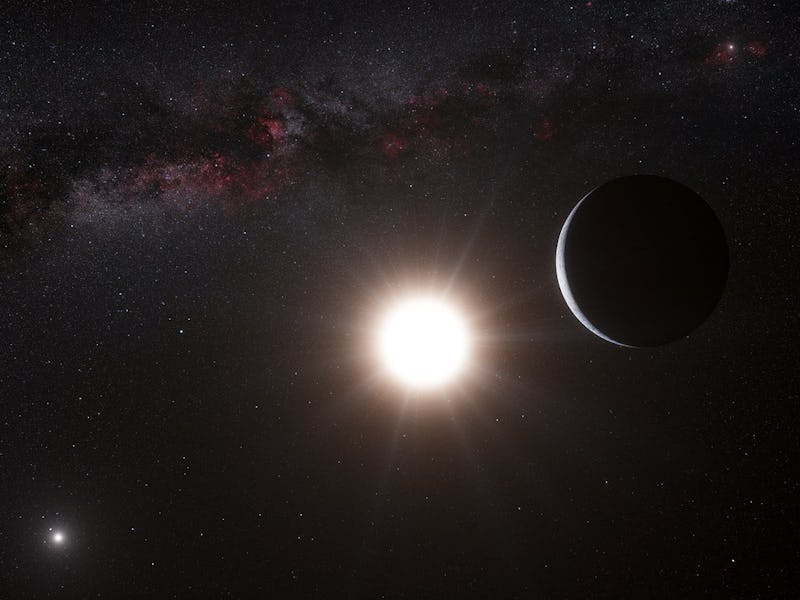Private Telescope to Look for Alien Planets at Alpha Centauri

Alpha Centauri, the closest star system to Earth at just 4.37 light years away, is thought to have a pretty good chance of possessing a habitable planet. That’s enough to have spurred Stephen Hawking and Russian billionaire Yuri Milner to sponsor a $100 million-plus endeavor to send laser-powered nanocraft into deep space look for extraterrestrials and other signs of habitability in the region.
That project, called the Breakthrough Starshot initiative, apparently won’t be the only privately-backed foray investigating Alpha Centauri. Meet Project Blue: a new venture announced today whose goal is to build and launch lightweight telescope into Earth’s orbit by 2019 specifically to observe Alpha Centauri.
What makes Alpha Centauri so special? It’s not simply that it’s close to us — it also possesses the kind of ingredients astronomers look for when assessing the potential for a start system to host habitable worlds. The binary star system is pretty stable, and boasts twice the size of a “goldilocks zone” (the region around a star where liquid surface water could exist. Currently, we know of no planets that orbit Alpha Centauri, but some scientists think there is as high as an 85 percent chance Alpha Centauri possess an Earth-like planet.
Project Blue, sponsored by a scientific consortium led by the BoldlyGo Institute and Mission Centaur, will look to directly image Alpha Centauri in visible light and look for signs of Earth-like planets in the area between 2019 and 2022. The telescope would be about the size of a refrigerator and have support from NASA’s experts. Direct imaging of any planets would help scientists follow up with data collection related to biosignatures like carbon dioxide and oxygen.
The big question, of course, is how much will this cost. And right now, there is no clear idea — BoldlyGo Institute CEO Jon Morse told Space.com, “We will have, hopefully, some further announcements that we’re not quite ready to talk about.” He said funding could range between $10 million and $50 million over the entire mission’s lifetime — a broad range, but about 33 percent the cost of a typical NASA mission with similar investigative goals. The consortium expects to raise money from sponsorships, community involvement, and other unspecified methods.
An easier way of getting funding would be to go straight through NASA and submit a mission proposal. That’s exactly the route NASA scientists Ruslan Belikov and Eduardo Bendek have taken with their Alpha Centauri Exoplanet Satellite (ACESat) design. Even before Breakthrough Starshot, the pair were pushing forward the idea of putting together a space telescope just to study Alpha Centauri.
Unfortunately, while it would be a lot easier to fund ACESat through NASA, there still a 15 percent chance that there is nothing worth looking at in the goldilocks zones of both Alpha Centauri stars. That’s a 15 percent chance of failure — something that gives the risk-averse NASA great pause in greenlighting ACESat.
Project Blue would essentially bypass those concerns — yet it remains to be seen whether they will find enough money to meet the 2019 deadline.
There’s also, of course, the question of whether Project Blue could search for signs of life on Proxima b — the potentially habitable world orbiting the nearby Proxima Centauri star (4.22 light-years away). The answer is no. Proxima Centauri is a small and pretty dim red dwarf. Its planet orbits way too close to the star in order for Project Blue telescope, ACESat, or most other low-cost instruments to properly study it.
Nevertheless, if Project Blue or another telescope can be successfully built and launched, we might finally have a shot at determining whether Earth 2.0 resides just a stone’s throw away.